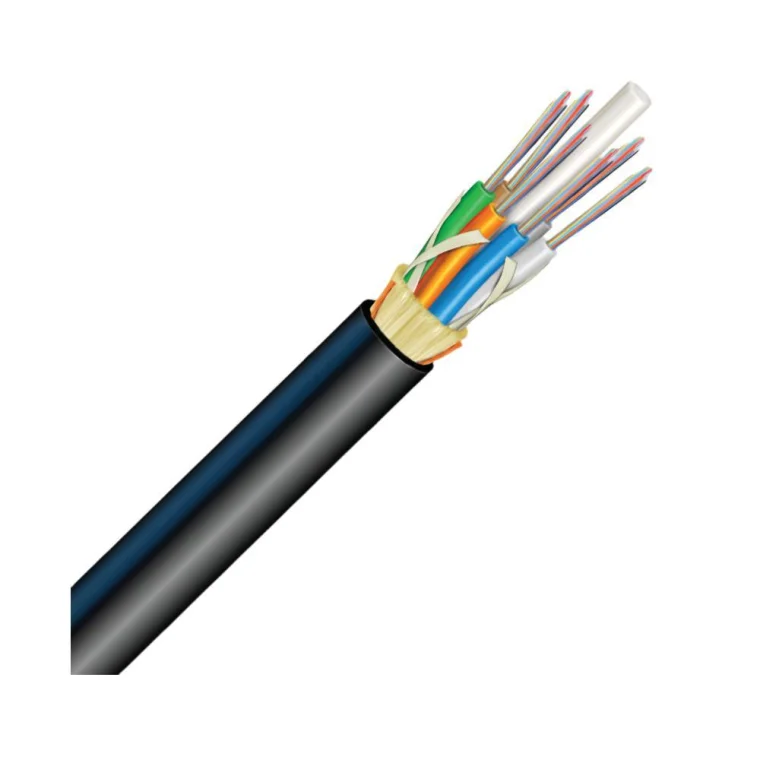When it comes to setting up a reliable and high-performance network, choosing the right fiber optic outdoor cable is crucial. Outdoor cables are exposed to various environmental conditions, which means they need to be tough, durable, and reliable. Whether you're setting up a local area network (LAN), wide area network (WAN), or long-distance communication, the type of fiber optic cable you choose can significantly impact the performance and longevity of your network.
This guide will walk you through the essential factors to consider when selecting the right fiber optic outdoor cable for your network installation.

1. Understand the Types of Fiber Optic Cables
Fiber optic cables are available in different types, each designed for specific applications. The two main types of fiber optic cables are:
-
Single-mode fiber (SMF): Ideal for long-distance communications, SMF has a small core size that allows light to travel in a single mode, reducing signal loss over long distances. It's commonly used for internet backbone installations and high-speed data transmission.
-
Multi-mode fiber (MMF): Multi-mode fiber is designed for short to medium-distance communication. It has a larger core, allowing multiple light paths, but this results in more signal attenuation over long distances.
When selecting a fiber optic outdoor cable, consider the distance your signal needs to travel. For long-distance applications, single-mode fiber is generally the best option. For shorter, local connections, multi-mode fiber may be sufficient.
2. Determine the Environment and Durability Requirements
Outdoor fiber optic cables are built to withstand harsh environmental conditions, including extreme temperatures, moisture, UV radiation, and physical damage. Understanding the environment where the cable will be installed is key to selecting the right product.
-
Weather Resistance: Choose cables with proper insulation and coatings that are resistant to temperature extremes and weather conditions. Some outdoor cables are designed with a UV-resistant jacket to protect against sun damage.
-
Waterproofing: If the cable will be exposed to water or buried underground, look for cables with a waterproof sheath and water-blocking materials to prevent water infiltration, which can cause signal degradation.
-
Rodent and Pest Protection: In some environments, such as areas with frequent rodent activity, it’s important to select cables with rodent-resistant materials, which prevent damage from animals.
3. Consider the Fiber Optic Cable Jacket and Strength Members
The jacket material and strength members of an outdoor fiber optic cable are critical for protecting the fibers from external stressors. Common jacket materials include:
-
Polyethylene (PE): This material is commonly used for outdoor cables as it is durable, UV-resistant, and weatherproof.
-
Low Smoke Zero Halogen (LSZH): For applications where smoke toxicity is a concern, LSZH jackets provide a safer alternative.
Strength members, such as aramid yarn (Kevlar) or steel wire, are used to provide additional mechanical strength to the cable, making it resistant to physical damage during installation or throughout its operational life.
4. Assess the Fiber Count and Cable Configuration
The fiber count refers to the number of individual fibers inside the cable. Depending on the network’s capacity and future expansion plans, you can choose from a range of fiber counts. A higher fiber count offers more bandwidth, making it ideal for high-capacity installations.
Some cables also offer features like armored designs, where additional protective layers of metal provide extra strength for cables exposed to mechanical stresses or buried applications.
5. Choose a Reliable Supplier
When investing in fiber optic outdoor cables, choosing a reliable supplier is paramount. FlyingFiber Co., Ltd., a leading provider of fiber optic communication solutions, has over ten years of experience in delivering high-quality fiber optic products. Their extensive product range includes both passive and active fiber optic products, fiber optic engineering, and testing solutions.
FlyingFiber Co., Ltd. specializes in offering top-notch fiber optic cables that are designed to meet the specific needs of outdoor network installations. Their commitment to providing robust and reliable products ensures that your network will be equipped with cables that offer longevity, performance, and minimal signal loss.
Final Thoughts
Choosing the right fiber optic outdoor cable is an important decision that impacts the success of your network installation. By considering factors like cable type, environmental conditions, durability, and fiber count, you can ensure your installation is efficient, reliable, and built to last.
Partnering with a trusted supplier like FlyingFiber Co., Ltd. will ensure you have access to top-quality products designed for performance and durability. Their extensive expertise and high-quality solutions make them a reliable choice for any fiber optic network installation.
www.flyingfiber.com
Shenzhen FlyingFiber Co., Ltd.